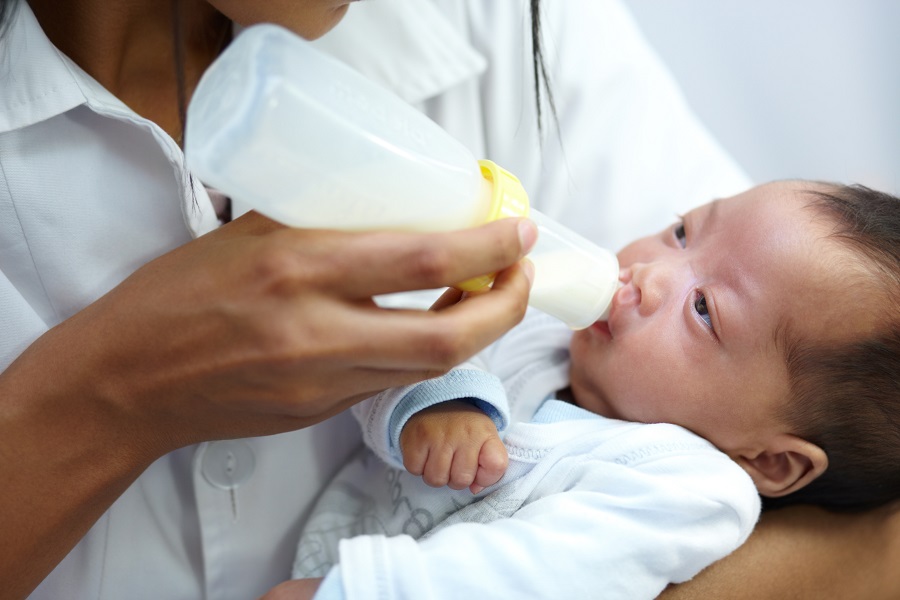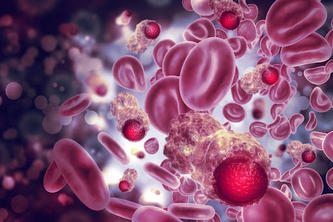
While the experience of pregnancy is one of love and excitement for many families, the discovery that a child is developing differently in utero can be overwhelming. Every year, one in 600 babies in the United States is born with a cleft lip or palate that results in both medical difficulties and facial differences. Though cleft and craniofacial conditions are some of the most common birth defects both nationally and worldwide — affecting thousands of infants, children, teenagers and adults and their families every year — public awareness of the conditions is often limited.
For National Cleft and Craniofacial Awareness Month in July, Dr. Anna Thurmes, clinical assistant professor of pediatric dentistry at the University of Minnesota School of Dentistry, discusses what these conditions are and the work she and her team are doing to improve lifelong outcomes for patients and their loved ones.
Q: What problems do individuals with cleft and craniofacial conditions often face?
Dr. Thurmes: Cleft and craniofacial conditions not only affect appearance but also speech, language, hearing, dental health, jaw health and neurodevelopment. There is a large body of evidence showing that orofacial cleft and craniofacial anomalies can also have a significant effect on the physical, mental and social well-being of individuals and their families. Common problems caused by cleft lip and cleft palate for children born with the condition include feeding problems during infancy, breathing problems, atypical speech development and language delays, conductive hearing loss and dental and jaw anomalies. While these are the most commonly associated health issues, every person must be closely evaluated throughout growth and development to ensure early identification and treatment of other related problems. The evaluation and management of these problems extends far beyond the expertise of one physician, dentist or therapist.
While these individuals typically go through numerous surgeries, dental care and speech therapy, it’s important to emphasize that facial differences do not define who they are. Facial uniqueness is something that should be embraced and celebrated. We should lean in and work to understand the life perspective of people born with facial differences.
Q: What are some of the different kinds of cleft and craniofacial conditions?
Dr. Thurmes: A variety of cleft and craniofacial conditions occur when there is an interruption of normal embryologic growth and development of the face and skull. Cleft lip and cleft palate are often diagnosed early in pregnancy via ultrasound. Some clefts seem to be caused by a combination of genetic and environmental factors, although there continues to be no known cause in many cases. Maternal smoking, lack of folic acid and specific medications are risk factors.
In addition to cleft lip and palate, other craniofacial conditions we see at birth are craniofacial microsomia — in which parts of the face, including ears, eyes, cheeks and jaw are smaller and underdeveloped — and craniosynostosis — which is a premature fusion of the skull bones. No specific genes have been tied to craniofacial microsomia and it appears to happen sporadically. While there have been single genes known to cause craniosynostosis, in many cases it is caused by a combination of genes and environmental factors, such as the mother's diet and medications. Fortunately, there are many effective treatment options available for these conditions.
Q: What does treatment look like for cleft and craniofacial conditions?
Dr. Thurmes: Cleft and craniofacial conditions are usually diagnosed prenatally or shortly after birth, which means that treatments can start right away for newborns. Feeding problems can be addressed immediately, and typically a few weeks after birth an initial surgical plan is finalized with the surgeon, parents and cleft team. Most children with cleft lip and cleft palate will have a few surgeries in the first year of life, including a lip repair at about 3-6 months of age, the insertion of ear tubes and a palate repair. Once the palate is repaired, most children will require close monitoring and intervention with a speech-language pathologist and audiologist. After the initial surgeries and the initiation of speech therapy, most of the treatments are related to addressing the dental and jaw challenges.
That being said, final treatments cannot be completed until the late teen and young adulthood years when facial and dental growth is more complete. It is also important to recognize that these are chronic conditions. Adults may have ongoing needs related to cleft and craniofacial conditions developed before birth, particularly related to dental and psychosocial well-being. It’s important for children to become established with a comprehensive medical care team as early as possible to set them up for success.
Q: What are the best practices related to care for individuals with cleft and craniofacial conditions?
Dr. Thurmes: The standard of care for individuals with cleft and craniofacial conditions is a comprehensive, interdisciplinary team model beginning shortly after birth and continuing through young adulthood. For example, the comprehensive Cleft and Craniofacial Team at the UMN School of Dentistry includes a nurse coordinator as well as experts in craniofacial plastic surgery, pediatric ENT, oral maxillofacial surgery, speech-language pathology, audiology, craniofacial orthodontics, pediatric dentistry and prosthodontics. The team also works closely with experts in genetics, neurosurgery, neuropsychology, ophthalmology, social work and family-marriage therapy. The teams continuously monitor key factors for successful patient and family outcomes, including care coordination, family-centered care and community support.
Q: What type of work are you and your team doing to advance knowledge about cleft and craniofacial conditions?
Dr. Thurmes: A big part of my personal research has been on the reliability and validity of tools we use to measure outcomes for speech. As a part of this work, I organized and hosted the first meetings for the Americleft Speech project here at the University of Minnesota School of Dentistry. My work has also focused on child and parent quality of life and identifying strategies to promote family well-being, particularly related to 22q11.2 deletion syndrome, a chromosomal disorder that results in poor development of several body systems. From this work, we are learning more about the family, healthcare and community partnerships and resources that best support the quality of life for families caring for children with complex cleft and craniofacial conditions.
The University of Minnesota has several leading researchers across many disciplines working to advance our knowledge and treatment of cleft and craniofacial conditions. The University of Minnesota Cleft and Craniofacial Team is housed in the School of Dentistry and provides one of the best models for interprofessional care in the country. We are working to advance treatment by training future providers in the interprofessional care model. We are also working to address the predicted shortage of dentists and therapists trained in the specialty. It’s both exciting and essential to our work that we partner with experts from around the world to advance knowledge, care and quality of life for individuals affected by cleft and craniofacial conditions, as well as their families. It certainly takes all of us! Reach out to our team at [email protected] if you would like to become involved in the cause during Cleft & Craniofacial Awareness Month and beyond.
Anna Thurmes, PhD, MA, CCC-SLP, is a clinical assistant professor in the Division of Pediatric Dentistry and a program leader of the Cleft Palate/Craniofacial Program at the University of Minnesota School of Dentistry. She works as a craniofacial speech-language pathologist and family social scientist. Her clinical expertise is in the area of velopharyngeal dysfunction and cleft-craniofacial genetic based speech-language and feeding disorders.
-30-
About the School of Dentistry
The University of Minnesota School of Dentistry advances health through scientific discovery, innovative education and the highest-quality care for all communities. As the state's only dental school, the School of Dentistry educates the next generation of oral health professionals and is a resource to five states for dental education and consultation. Of Minnesota’s practicing dentists, 72 percent are graduates of the dental school. Through its clinics, the School of Dentistry also sees more than 156,000 patient visits each year. Learn more at dentistry.umn.edu.
About “Talking...with U of M”
“Talking...with U of M” is a resource whereby University of Minnesota faculty answer questions on current and other topics of general interest. Feel free to republish this content. If you would like to schedule an interview with the faculty member or have topics you’d like the University of Minnesota to explore for future “Talking...with U of M,” please contact University Public Relations at [email protected].
- Categories:
- Health
- Health conditions




